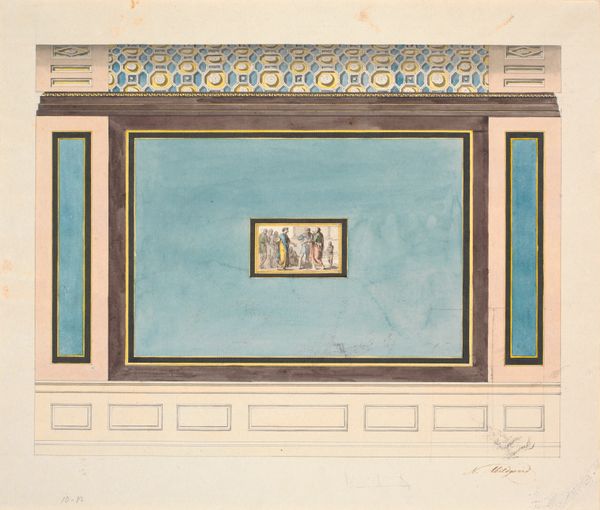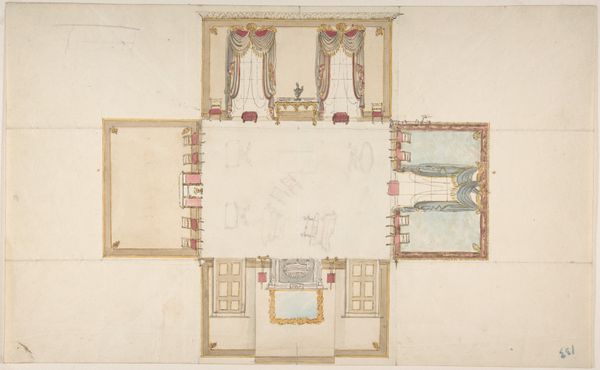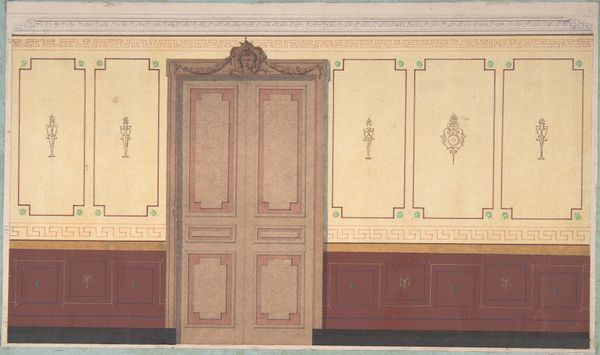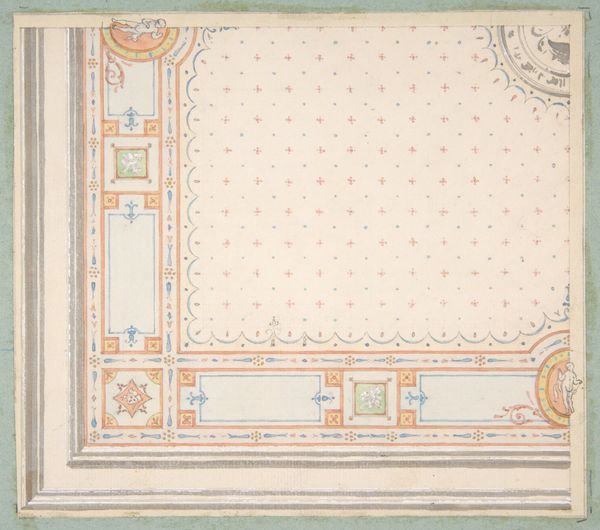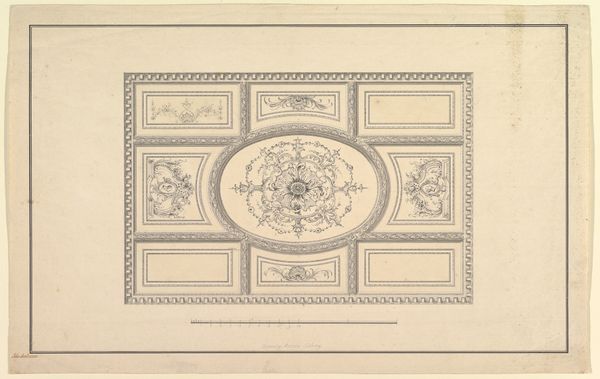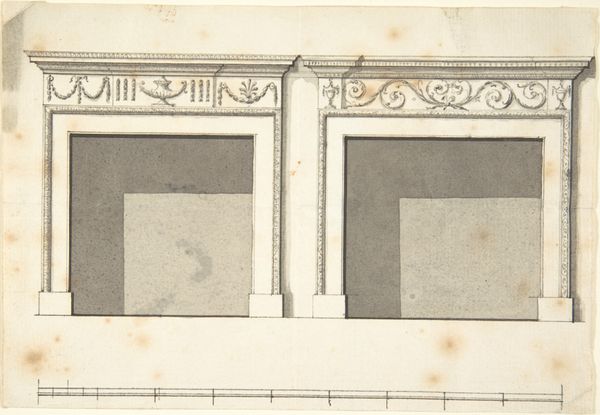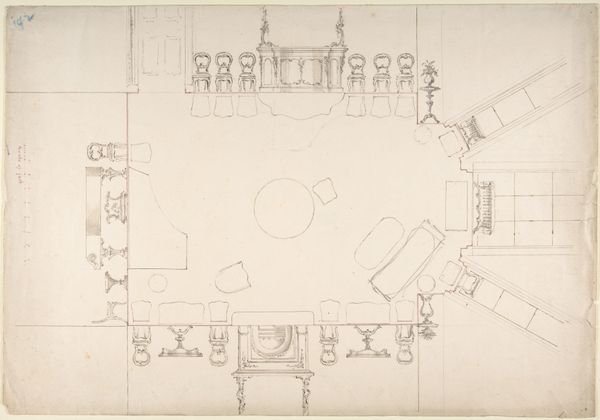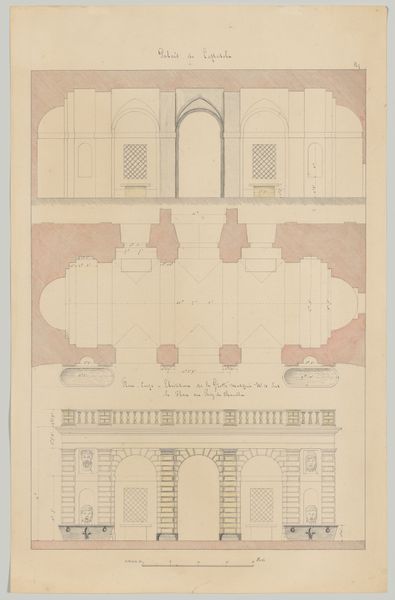
Langvæg med to døre. Dekoration af et værelse med tøndehvælv 1790s
0:00
0:00
drawing, watercolor, architecture
#
drawing
#
neoclacissism
#
landscape
#
watercolor
#
watercolor
#
architecture
Dimensions: 301 mm (height) x 474 mm (width) (bladmaal)
Editor: Here we have Nicolai Abildgaard's "Long Wall with Two Doors. Decoration of a Room with Barrel Vault" created in the 1790s using drawing and watercolor. It has this very austere feeling; a sketch of a room that’s all about classical symmetry. I am really interested to learn more about the space intended here. What do you see in this piece, looking at it from your historical point of view? Curator: Well, what immediately strikes me is the representation of power and societal ideals prevalent during the Neoclassical period. Abildgaard, deeply embedded in the political climate of his time, would have been acutely aware of the potent role that architectural design played in conveying authority and cultural aspirations. This is much more than an aesthetic exercise; it’s about how spaces shape our perception of authority and reflect societal structures. The museum where this is held adds another layer. How does displaying this change the view, versus it in situ? Editor: Interesting - that shifts the question. It feels like a drawing to construct authority that’s been brought in, in turn under the authority of a gallery, completely altering the original intention. But without a knowledge of history, I wouldn't consider any of that. Can you elaborate a bit more on these societal structures? Curator: Certainly. Neoclassicism emerged during a time of great political and social upheaval, especially with the French Revolution, what does the austerity do in opposition to it? The architecture embraced in this piece reflects that of the elite, a way to broadcast order, control, and the supposed virtues of ancient societies. The calculated composition suggests the power structure that these buildings reflect; and in a more radical approach is the challenge of its inherent design that reinforces existing power structures? Is it a statement or challenge to authority? Editor: That’s a fascinating way to look at it. I hadn't considered the link between architectural design and social control, so now it opens up many new ideas about context in this work. Curator: Exactly! The history shapes it as a cultural artifact and it prompts reflection on how spaces influence our behaviour, expectations and historical perspective on how power is distributed and maintained.
Comments
No comments
Be the first to comment and join the conversation on the ultimate creative platform.



